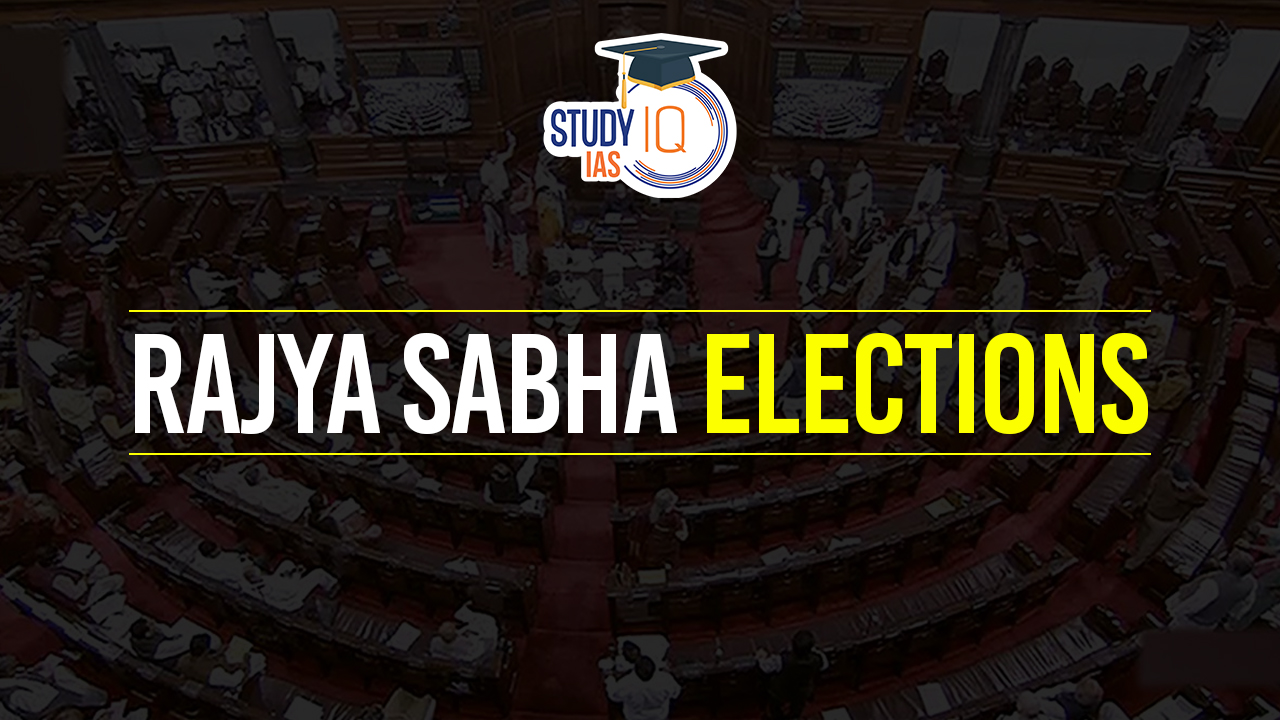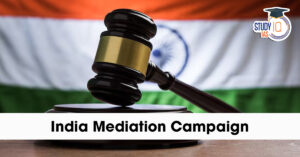Table of Contents
In the 2024 Rajya Sabha elections, the Congress secured victory in three out of four seats in Karnataka and eight out of ten seats in Uttar Pradesh. However, the party suffered a significant setback in Himachal Pradesh, where it holds the majority.
Rajya Sabha Elections 2024 Highlight
| State | Party | Seats Won | Key Highlights |
|---|---|---|---|
| Uttar Pradesh | BJP | 8 | BJP secures 8 out of 10 seats.
BJP’s Sudhanshu Trivedi predicts a significant win in the upcoming Lok Sabha elections. |
| Samajwadi Party (SP) | 2 | SP secures 2 seats. | |
| Karnataka | Congress | 3 | Congress wins 3 out of 4 seats.
JD(S) candidate Kupendra Reddy loses amid cross-voting speculations. |
| BJP | 1 | BJP secures 1 seat. | |
| Himachal Pradesh | BJP | 1 | BJP’s Harsh Mahajan wins, defeating Congress’s Abhishek Manu Singhvi.
Allegations of cross-voting surface with BJP claiming support from Congress and Independent MLAs. |
What is Draw Of Lots In Election?
Context:
- The elections to the 15 Rajya Sabha seats in Uttar Pradesh, Karnataka, and Himachal Pradesh were marked by cross-voting in all the three States despite parties issuing three-line whips, deviating from the norm.
- The draw of lots was used to decide a winner in a Rajya Sabha election in Himachal Pradesh.
Procedure in Case of tie in Rajya Sabha
- Representation of the People Act (RPA): Section 102 of the Representation of the People Act, 1951 provides a solution for tied elections.
- After the votes are counted, if there’s a tie, the winner is decided by a draw of lots. The candidate who receives an additional vote through this draw becomes the victor.
- Chairman’s Role: In the Rajya Sabha, the Chairman has the right to vote only in the case of a tie.
- However, if a resolution to remove the Chairman is under consideration, they should not preside over it or vote on the decision.
- Previous Instances:
- In Himachal Pradesh, a Rajya Sabha election witnessed the use of a draw of lots to determine the winner.
- The entire process was conducted in accordance with the law, with the returning officer overseeing the proceedings in the presence of the candidates.
- Draw of lots has also been employed in local body elections:
- In the Brihanmumbai Municipal Corporation elections, a tie between BJP and Shiv Sena led to three rounds of recounting. Ultimately, a draw of lots favoured the BJP candidate.
- Similarly, during the Mathura civic polls, a BJP candidate named Meera Agarwal was tied at 874 votes in a ward. She was declared the winner after the final draw of lots.
- The Supreme Court has also weighed in on this matter.
- In 2014, the court ruled in favour of using a draw of lots when two candidates receive an equal number of votes.
- The Madras High Court upheld the rule of draw of lots as a tie-breaker in an election, emphasising that it’s for legislatures to decide on its continuation.
- In Himachal Pradesh, a Rajya Sabha election witnessed the use of a draw of lots to determine the winner.
Role of Whips in Rajya Sabha Elections
- Whips Not Applicable for Rajya Sabha Elections: Whips, which are formal orders from political parties instructing members on how to vote, do not apply to Rajya Sabha elections because these elections are conducted by the Election Commission outside the legislative assembly.
- Exemption Under the 10th Schedule: Due to the absence of whips in Rajya Sabha elections, MLAs who cross-vote cannot be subjected to disciplinary action under the 10th Schedule of the Indian Constitution, which deals with the anti-defection law.
- Conscience Vote Permitted: The exemption allows MLAs to vote according to their personal preference, often referred to as a “conscience vote,” without the threat of disqualification for defying party orders.
- Legal and Legislative Nuance: This situation underscores a nuanced aspect of the anti-defection law, distinguishing between voting within the legislative assembly (where whips apply) and voting conducted externally by the Election Commission (where whips do not apply).
Rajya Sabha Elections 2024
The Election Commission announced the schedule for the Rajya Sabha Elections 2024 to 56 seats from 15 states of India. As per the constitutional provisions, members of the Rajya Sabha, the upper house of the Indian Parliament, are elected by the elected members of the State Legislative Assemblies and by the members of the Electoral College for Union Territories. The Rajya Sabha serves as a vital forum for deliberating and shaping legislation, providing representation to the states and territories of India.
About Rajya Sabha
| Important Facts About Rajya Sabha | |
| Present Strength | 245 members (233 elected, 12 nominated) |
| Maximum Strength | 250 (as per Constitution) |
| Composition |
|
| Tenure | 6 years, with elections for 1/3 members every 2 years |
| Vacancy | Filled for the remaining term of the predecessor |
| Chairperson | Vice President of India (ex-officio), with Deputy Chairman appointed from members. |
| Nature Of House |
Permanent (i.e. cannot be dissolved) |
| Prorogued? | Yes, by the president. |
Procedure Of Rajya Sabha Elections
- Electorate:
- Indirect: Elected by MLAs (Members of Legislative Assembly)
- Size varies per state based on population.
- Voting System: Proportional Representation with Single Transferable Vote (STV)
- MLAs rank candidates in order of preference (1, 2, 3…) on a single ballot.
- Each vote counted only once.
- Open ballot with verification to prevent cross-voting.
- Winning Quota:
- Formula for single seat: Total votes / (Number of seats + 1) + 1
- Formula for multiple seats: [(Number of votes x 100) / (Vacancies + 1)] + 1
- Quota decreases with more seats or vacancies.
|
Important Facts |
In 2003, the Representation of People (Amendment) Act introduced two significant changes to the Rajya Sabha elections:
|
We’re now on WhatsApp. Click to Join
Articles Related To The Election Of Rajya Sabha
| Articles Related To The Election Of Rajya Sabha | |
| Article 80(3) | The President nominates 12 members based on expertise in literature, science, art, or social service. |
| Article 80(4) | State representatives are elected by state legislators using proportional representation by means of a Single Transferable Vote. |
| Article 83(1) | No dissolution; one-third retire every 2 years following a parliamentary law. |
Difference Between Lok Sabha and Rajya Sabha Elections
Check here the all aspects of the Difference Between Lok Sabha and Rajya Sabha Elections:
| Aspect | Rajya Sabha Elections | Lok Sabha Elections |
| Electoral Body | Elected by the elected members of State Legislative Assemblies (MLAs). | Directly elected by the eligible voters of India. |
| Voting System | Proportional representation by means of a single transferable vote (STV). | First-past-the-post system (simple majority). |
| Eligibility of Voters | Only MLAs are eligible to vote. | All Indian citizens aged 18 and above, registered as voters, are eligible to vote. |
| Constituency | No specific constituency; MLAs from each state vote for candidates. | Each MP represents a specific geographical constituency. |
| Nominated Members | 12 members are nominated by the President for their contributions in art, literature, science, etc. | No members are nominated; all are elected. |
| Term Duration | Each member serves for six years, with one-third of members retiring every two years. | Members are elected for a term of five years, unless the House is dissolved earlier. |
| House Permanence | Rajya Sabha is a permanent house and cannot be dissolved. | Lok Sabha can be dissolved and fresh elections are held usually every five years. |
| Minimum Age | To be an MP (Member of Parliament) of the Rajya Sabha, one has to be at least 30 years of age. | To be an MP (Member of Parliament) of the Lok Sabha, one has to be at least 25 years of age. |


 Monasteries in India: List of Major and ...
Monasteries in India: List of Major and ...
 National Doctor’s Day 2025: History, T...
National Doctor’s Day 2025: History, T...
 India Mediation Campaign, Objectives, Pr...
India Mediation Campaign, Objectives, Pr...





















